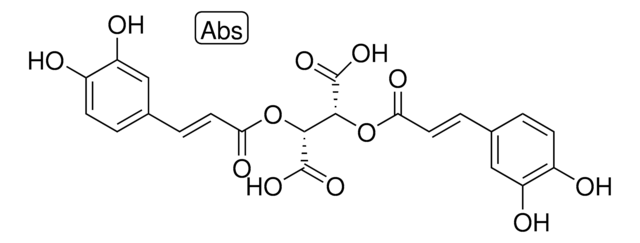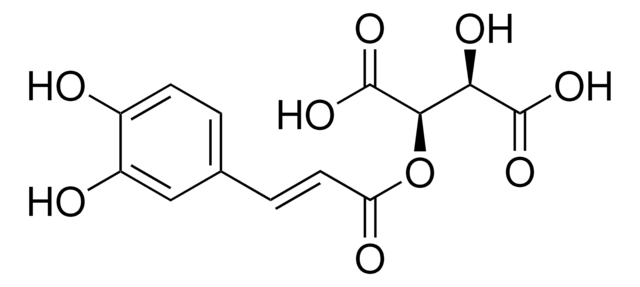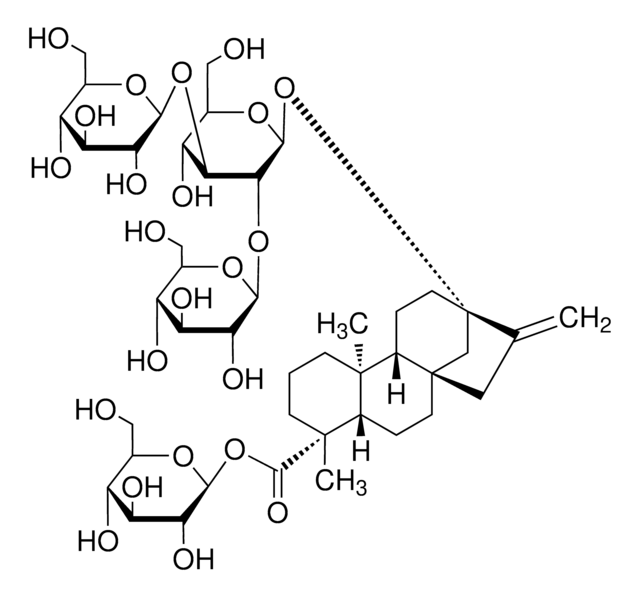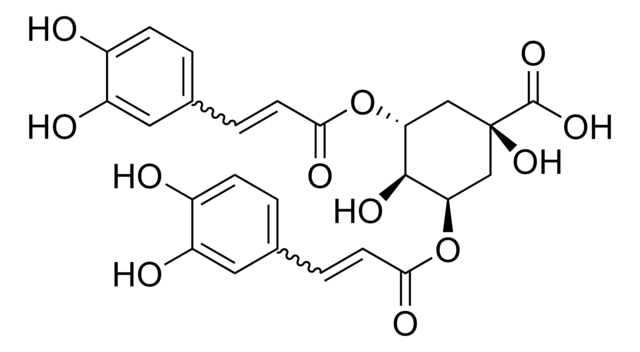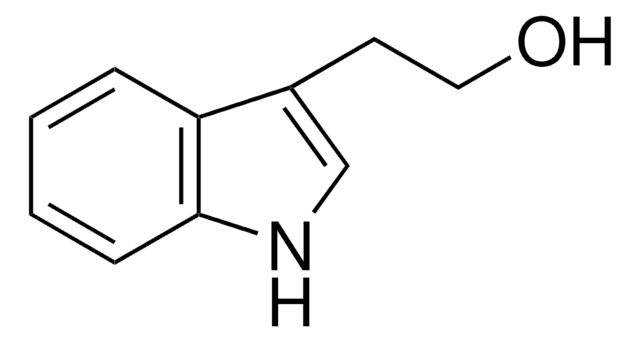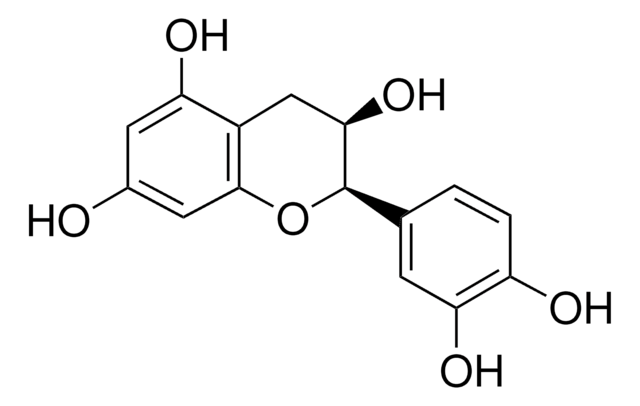Kluczowe dokumenty
15029
Caftaric acid
≥97.0%
Synonim(y):
2-Caffeoyl-L-tartaric acid
About This Item
Polecane produkty
Poziom jakości
Próba
≥97.0%
Formularz
powder
zanieczyszczenia
≤10% water
Zastosowanie
metabolomics
vitamins, nutraceuticals, and natural products
temp. przechowywania
2-8°C
ciąg SMILES
O[C@H]([C@@H](OC(=O)\C=C\c1ccc(O)c(O)c1)C(O)=O)C(O)=O
InChI
1S/C13H12O9/c14-7-3-1-6(5-8(7)15)2-4-9(16)22-11(13(20)21)10(17)12(18)19/h1-5,10-11,14-15,17H,(H,18,19)(H,20,21)/b4-2+/t10-,11-/m1/s1
Klucz InChI
SWGKAHCIOQPKFW-JTNORFRNSA-N
Szukasz podobnych produktów? Odwiedź Przewodnik dotyczący porównywania produktów
Opis ogólny
Zastosowanie
- as a standard antioxidant to determine the antioxidant potential (AOP) of red wine using 2,2-diphenyl-1-picrylhydrazyl (DPPH) assay
- as an antioxidant together with sulfur dioxide (SO2) to measure the antioxidant potential of white wines using 2,2-diphenyl-1-picrylhydrazyl (DPPH) and Folin-Ciocalteu (FC) assays
- to evaluate the myelopoietic effect on bone marrow of rats treated with various Echinacea purpurea extracts
- to identify (poly)phenolic compounds in concord grape juice and their metabolites in human plasma and urine after juice consumption
Działania biochem./fizjol.
Opakowanie
Kod klasy składowania
11 - Combustible Solids
Klasa zagrożenia wodnego (WGK)
WGK 3
Temperatura zapłonu (°F)
Not applicable
Temperatura zapłonu (°C)
Not applicable
Środki ochrony indywidualnej
Eyeshields, Gloves, type N95 (US)
Wybierz jedną z najnowszych wersji:
Masz już ten produkt?
Dokumenty związane z niedawno zakupionymi produktami zostały zamieszczone w Bibliotece dokumentów.
Klienci oglądali również te produkty
Protokoły
HPLC Analysis of Polyphenols in Nero d'Avola Red Wine on Discovery® HS C18 (UV 280 nm)
Nasz zespół naukowców ma doświadczenie we wszystkich obszarach badań, w tym w naukach przyrodniczych, materiałoznawstwie, syntezie chemicznej, chromatografii, analityce i wielu innych dziedzinach.
Skontaktuj się z zespołem ds. pomocy technicznej